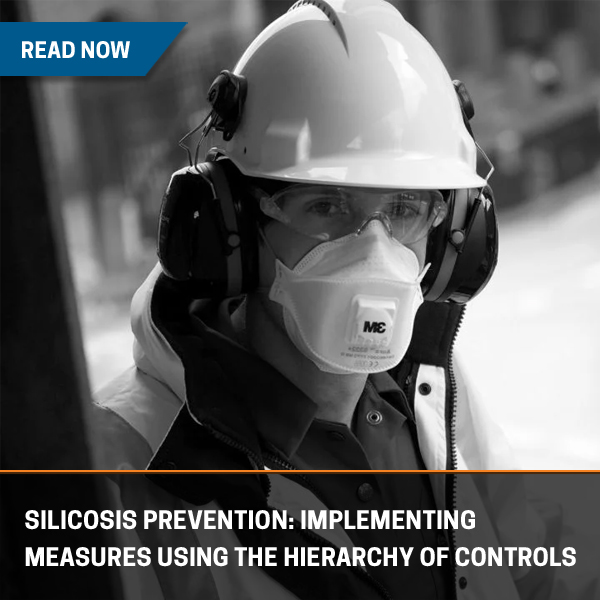-
 Track
Track
OrderSales Order Number Please enter the sales order numberORPurchase Order NumberWhere to find BWSO/PO number?Account Number* Please enter the account numberYou can also track an order, by going to the shipment dashboard
Select Delivery Method
Please enter your delivery address to check availability.
- Home
- silica-dust
Silica Dust




The recent increase in the cases of silicosis amongst Australian workers has seen silica being dubbed “the new asbestos”.
Long-term exposure to silica, which is created when artificial or engineered stone is cut, is the cause of silicosis, an irreversible lung disease which can eventually become fatal.
While most commonly found in quartz, silica dust (crystalline silica) can also be found in bricks, tiles, concrete and some plastics. The dust is generated in processes including crushing, cutting, drilling, grinding, sawing or polishing of these stones. Silica dust is 100 times smaller than a grain of sand, and becomes harmful once it is breathed in.
It’s estimated that around 600,000 Australian workers are exposed to silica dust at work. The Cancer Council of Australia estimates that this exposure is causing over 230 cases of lung cancer each year across the country.
Choosing the best control measure for silica dust
According to Safe Work Australia, managing risks and worker exposure to silica dust can be achieved by selecting and implementing measures using the hierarchy of controls. More than one control will generally be required to adequately protect workers.
- Substitution - Substitution such as sourcing composite stone benchtops with a lower percentage of silica.
- Isolation - Isolation of the hazard - using principles of safe work design to designated areas for tasks that generate dust and appropriate worker positioning during these tasks, using enclosures and automation to conduct dust generating tasks.
- Engineering controls - Engineering controls that minimise the risk of exposure to generated dust - e.g. local exhaust ventilation, water suppression (wet cutting) or using tools with dust collection attachments.
- Administrative controls - Should a risk still remain administrative controls, including good housekeeping policies, shift rotations and modifying cutting sequences.
- Personal protective equipment - Ensure use of PPE including appropriate respiratory equipment (generally a minimum of a P2 efficiency half face respirator) and work clothing that does not collect dust.




















-1.png)











